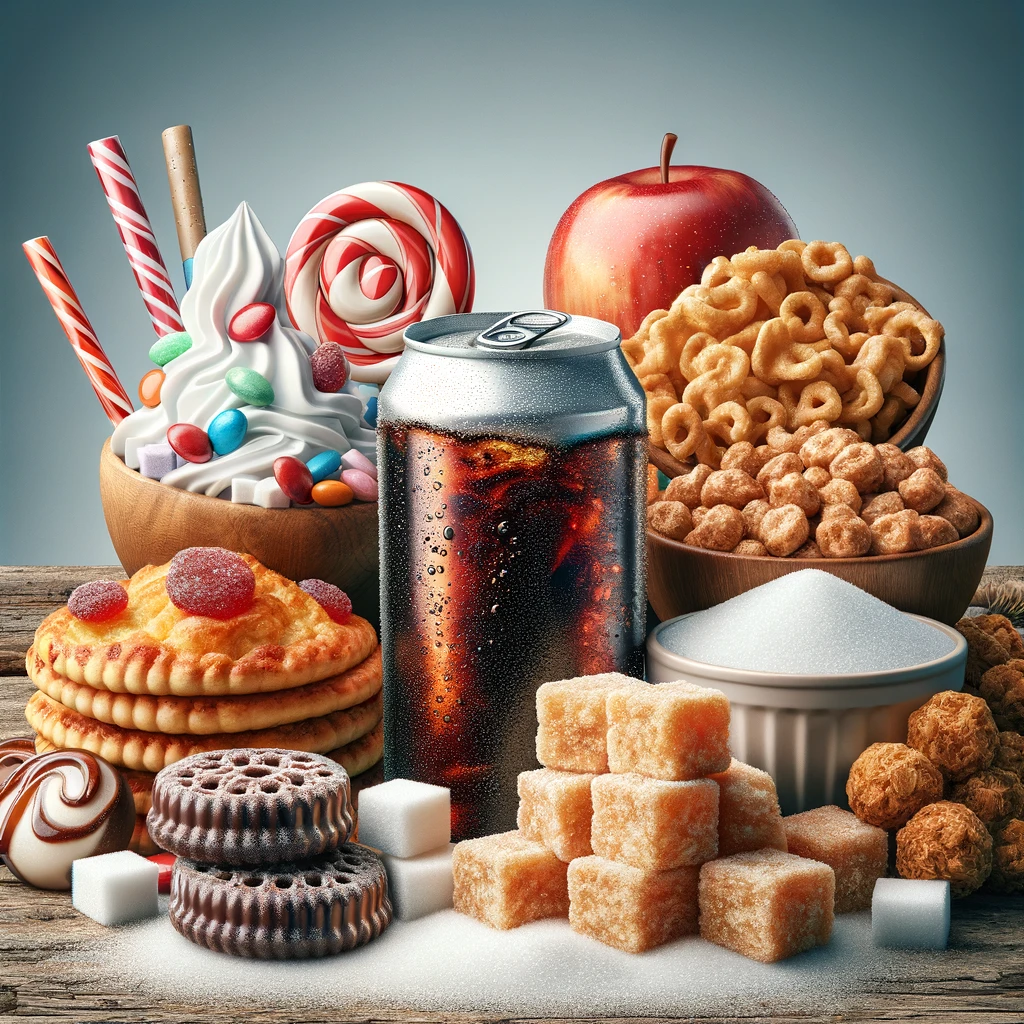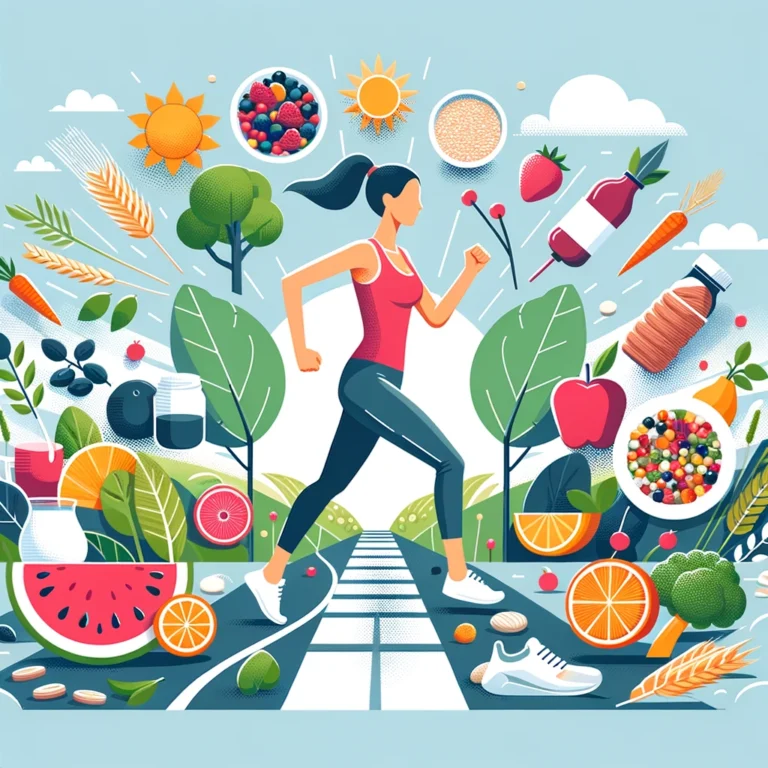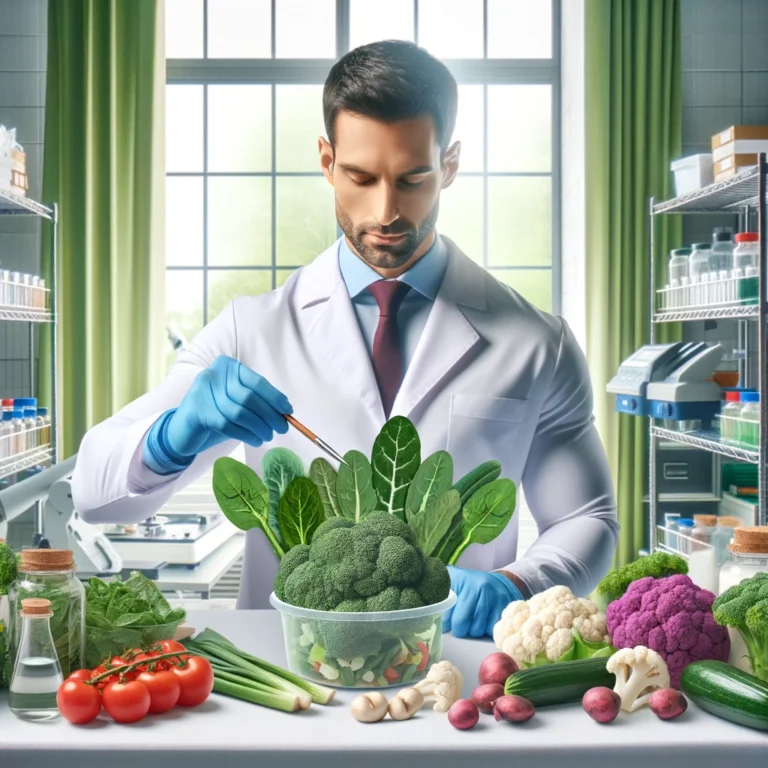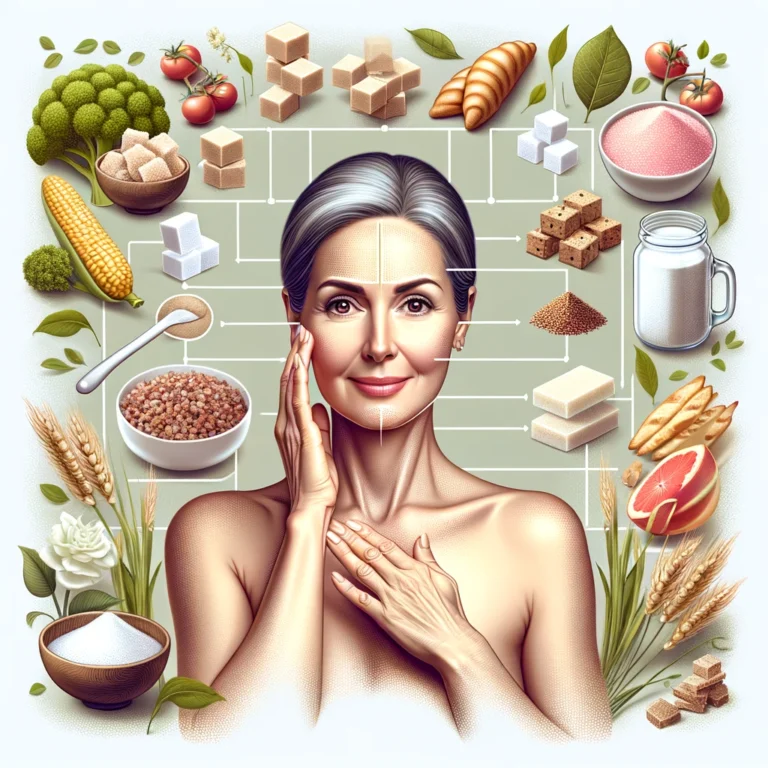Is Diabetes Possible if You Eat Too Much Sugar? What Experts Have to Say About It
Diabetes can be developed and managed in part through diet, but diet is not the primary contributor. There…
Diabetes can be developed and managed in part through diet, but diet is not the primary contributor.
There are a lot of theories as to what causes diabetes, and one of them is that eating too much sugar. Diabetes is a complicated illness brought on by several variables. Diabetes is caused by a complex web of factors, not just eating too much sugar. For instance, the Centers for Disease Control and Prevention estimate that 90% to 95% of cases of diabetes are type 2 diabetes, which can result from a mix of lifestyle and genetic factors.
Eating sugar does not cause diabetes, despite the American Diabetes Association noting a link between increased consumption of sugary drinks and type 2 diabetes. Correlation is not the same as association or causation. A number of other variables come into play as well, including genetics, age, race, physical activity, stress, and medical history.
Continue reading to find out more about the many types of diabetes, how to eat to lower your risk, and other topics.
Diabetes: What is it?
The general name for the malfunction of glucose metabolism that results in hyperglycemia (high blood sugar) is diabetes. The body may produce little or no insulin, its cells may be resistant to the insulin that is produced, or both may be the cause of this. Diabetes comes in a variety of forms, each with its own causes and risk factors. The major kinds of diabetes are divided down by the American Diabetes Association Standards of Care:
Type 1 Diabetes: An autoimmune condition where the body unintentionally targets itself, leading to either insufficient or nonexistent insulin production. To survive, people with type 1 diabetes need to take insulin.
Pre-diabetes: High blood sugar that is not high enough to be diagnosed as type 2 diabetes but is a precursor to the disease. Although prediabetes is characterized by insulin resistance, a type 2 diabetes diagnosis can be avoided, postponed, or reversed by lifestyle choices like diet, exercise, and weight loss.
Type 2 Diabetes: A non-autoimmune diabetes that can strike children but is typically identified later in adulthood. Your diet and exercise habits raise your risk of developing this form of diabetes because it is closely linked to your lifestyle. A group of illnesses known as metabolic syndrome, which raises the risk of diabetes, heart disease, stroke, and other chronic illnesses, is frequently present in people with type 2 diabetes. According to the National Heart, Lung, and Blood Institute, you have to have three or more of the following conditions in order to be diagnosed with metabolic syndrome: a wide waistline, high blood pressure, high cholesterol, high triglycerides, high blood sugar, and low HDL cholesterol.
Diabetes during pregnancy: Due to hormonal changes that occur during pregnancy, gestational diabetes, which is diagnosed in the second or third trimester, is characterized by elevated blood sugar levels. Nevertheless, after the baby is born, the issue normally goes away.
How Sugar Is Met By Your Body
“To metabolize sugar, your body requires insulin.” Pediatric endocrinologist Tina Cheng, D.O., of Good Samaritan University Hospital in New York, states that insulin aids in the body’s transportation of glucose into its cells. The body converts carbs, which are found in foods including dairy, grains, legumes, fruit, vegetables, and sweets, into glucose, often known as sugar. After then, the pancreas creates insulin, which the cells need as fuel to transport sugar from the bloodstream into the cells.
Foods that are classified as simple sugars—such as fruit juice, honey, syrup, and cane sugar—metabolize more quickly than foods that contain more complex carbohydrates, such whole grains and legumes. These foods have the potential to release a large amount of insulin.
Additionally, insulin aids in the body’s glycogen storage of sugar. Although the liver and muscles can store glycogen, their capacities are restricted. Insulin can help store excess carbs as fat (as in triglycerides) when an individual consumes too much of them and they cannot be stored in the liver or muscle for later use.
Is There a Higher Risk of Diabetes If You Eat Sugar?
The American Diabetes Association states that while eating sugar does not always result in diabetes, a diet high in added sugars, saturated fats, and excess energy intake is linked to an elevated risk of the disease. Diets heavy in sugar are also linked to a higher risk of metabolic syndrome, nonalcoholic fatty liver disease, and overweight and obesity.
A diet high in added sugars, saturated fats, and excess caloric intake is linked to an increased risk of getting diabetes, according to the American Diabetes Association, even if ingesting sugar does not cause diabetes straight away. A higher incidence of nonalcoholic fatty liver disease, metabolic syndrome, and overweight and obesity are also linked to high-sugar diets.
Dietitian Caroline Thomason, RD, CDCES, of the Washington, D.C. area continues, “Eating a lot of sugar can definitely increase your risk of type 2 diabetes. It makes sense that consuming more sugar is linked to a higher risk of diabetes because sugar has an effect on blood sugar levels. But ingesting sugar by itself won’t automatically result in diabetes. Furthermore, Cheng says, “Your risk of diabetes is influenced by how your body produces and uses insulin.”
Additional Sugar Recommendations
According to the Dietary Guidelines for Americans, people two years of age and above should consume fewer added sugars than 10% of their daily caloric intake. A 2,000-calorie diet, for instance, would only include 200 calories or roughly 12 tablespoons of sugar each day.
Sugary drinks rank as the primary source of added sugar, according to the CDC. 36.8 grams, or almost 10 teaspoons, of sugar are found in a 12-ounce beverage, according to the USDA. This amount is further restricted by the American Heart Association, which states that you can only consume 6% of your daily calories—roughly 6 to 9 teaspoons, depending on your gender.
Comparing Natural and Added Sugars
Natural sugars are, on the most basic level, those that are found in foods naturally, such as fruits, vegetables, and unsweetened dairy products. Conversely, additional sugars are added to food during the manufacturing process; examples of these are store-bought sauces, dressings, and sugary drinks.
The effects of natural sugar, added sugar, and non-nutritive sweeteners (sometimes known as artificial sweeteners) on diabetes have long been debated. Food is typically not consumed in isolation, and the majority of foods contain a range of nutrients, making this comparison difficult.
Fruit, for instance, is naturally sweet, but it also provides nutrients, fiber, vitamins, and minerals, as well as hydration. In addition, whole fruit has fewer calories than other foods and drinks with added sugar, like sweets and sweetened fruit juice. Increased fruit consumption was linked to a decreased risk of type 2 diabetes, according to a 2021 meta-analysis that was published in The Journal of Clinical Endocrinology and Metabolism.
Yet, blood sugar—a natural reaction to the metabolism of carbs—can be impacted by both natural and added sugar. According to Thomason, “Some foods, like fruit juice or yogurt, have naturally occurring sugars.” These items can affect blood sugar levels and count toward your daily carbohydrate intake, even if they don’t count against your total daily intake of added sugar.
“Sugars from natural sweeteners like honey, fruit juice, and maple syrup can still impact blood sugar levels if consumed in excess or if they are not matched with other macronutrients like protein, fat, and high-fiber carbohydrates,” the author continues.
The question of whether artificial sweeteners raise the risk of diabetes or cause overindulgence in food and weight gain has been discussed for many years. According to a 2023 meta-analysis funded by the American Beverage Association and published in the International Journal of Obesity, individuals who drank two or more diet beverages daily lost weight and showed improvements in health markers compared to those who drank water and abstained from all artificially sweetened beverages. Still, 3 pounds were dropped more by the group that drank diet soda. This does not imply that water is preferable to diet Coke. More likely, this research indicates that diet drinkers are reducing their caloric intake in other areas, which aids in weight loss.
A registered dietitian and certified diabetes care and education expert in New York, Audrey Koltun, RDN, CDCES, states that artificial sweeteners provide the sweetness of food and drink without adding unnecessary calories that may lead to weight gain. These can be included in a healthy diet when consumed in moderation. Using artificial sweeteners, for instance, can help someone with prediabetes or diabetes feel like they are not always on a “diet” without raising blood sugar levels.
Other Diabetes Risk Factors
Everyone should start having diabetes testing around age 35, according to the ADA’s Standards of Care in Diabetes. Adults with overweight or obesity (BMI 25 kg/m2 or above, or 23 kg/m2 or above in Asian American persons) who have one or more of the following risk factors are additional risk factors that suggest testing sooner or more frequently:
- Diabetes in a first-degree relative
- African American, Latino, Native American, Asian American, and Pacific Islander are examples of high-risk races and ethnicities.
- cardiovascular disease history
- High blood pressure (130/80 mmHg or above, or under hypertension medication)
- Low HDL cholesterol (0.90 mmol/L) and/or high triglyceride (2.82 mmol/L) levels exceeding 250 mg/dL
- Polycystic Ovarian Syndrome
- Absence of physical activity
- Pre-diabetic
- Other medical disorders (such as severe obesity and acanthosis nigricans) linked to insulin resistance
- HIV diagnosis during previous pregnancy
How to Eat to Reduce Your Diabetes Risk
There is no need for eating to reduce your risk of diabetes to be difficult or inconsistent with basic healthy eating recommendations. According to Koltun, “Eating a nutrient-dense diet the majority of the time and getting regular physical activity are recommended for everyone of all ages to lower your risk for diabetes.”
She says it’s vital to get a lot of vegetables along with other natural fiber sources like fruit, beans, lentils, unsweetened oats, and whole grains. A good place to start would be to reduce your consumption of sugar and refined carbohydrates and to prepare meals using the “My Plate” concept. Sort your plate such that half of it is made up of vegetables, 25% is lean protein, and 25% is starchy food such as whole grains, legumes, or starchy veggies like sweet potatoes or butternut squash.
Thomason agrees that using the plate method should be done. “Protein and vegetables can help to stabilize blood sugar levels by slowing down absorption through the digestive process,” she continues. “They won’t cause blood sugar levels to spike.” In a similar vein, selecting carbohydrates high in fiber can aid in reducing the overall blood sugar surge following a meal by delaying the release of carbohydrates into sugars.
The American Diabetes Association states that different eating habits can help avoid diabetes. These consist of a plant-forward diet, a vegetarian diet, a lower-carb diet, and the Mediterranean diet.
Finding an eating plan that suits you requires making sure it allows you to continue enjoying food, can be modified to fit your culture and lifestyle, meets your nutrient needs, and is sustainable. Speak with a qualified nutritionist for advice if you need assistance creating your perfect eating schedule.
Frequently Requested Questions
What is the primary reason for diabetes?
Depending on the kind of diabetes, different causes will apply. The CDC states that distinct causes contribute to the two most prevalent forms of diabetes, type 1 and type 2.
If you consume too much sugar, what happens to you?
There is no harm in occasionally consuming too much sugar for those without diabetes. It might give you a spike in energy that is followed by a drop. On the other hand, eating too much sugar on a regular basis raises the risk of insulin resistance and weight gain, which eventually results in diabetes.
What signs of overindulging in sugar are present?
“Some people report having a’sugar rush,’ while others say it makes them hyperactive,” according to Koltun, following a big sugar intake in a short length of time. There is no scientific proof for any of these consequences.” “Increased thirst, increased urination, increased appetite, and unexplained weight loss” are further signs of high blood sugar, according to Cheng.
How can the body rid itself of sugar?
Although you can’t always “flush” sugar from your body, you can take action to lower elevated blood sugar levels. “If you know your blood sugar is high, there are things you can take to lower it,” advises Thomason. “These include drinking lots of water, taking a 10-minute walk, and taking your medicine as prescribed.” You should speak with your doctor if your blood sugar is routinely higher than 250 mg/dL and you are unable to lower it on your own.
In summary
Diabetes is a complex illness for which a number of factors contribute to the diagnosis rather than just one cause. While lifestyle changes are a part of the treatment for all forms of diabetes, type 2 diabetes can be avoided or postponed by adopting healthy eating habits and engaging in regular physical activity.







